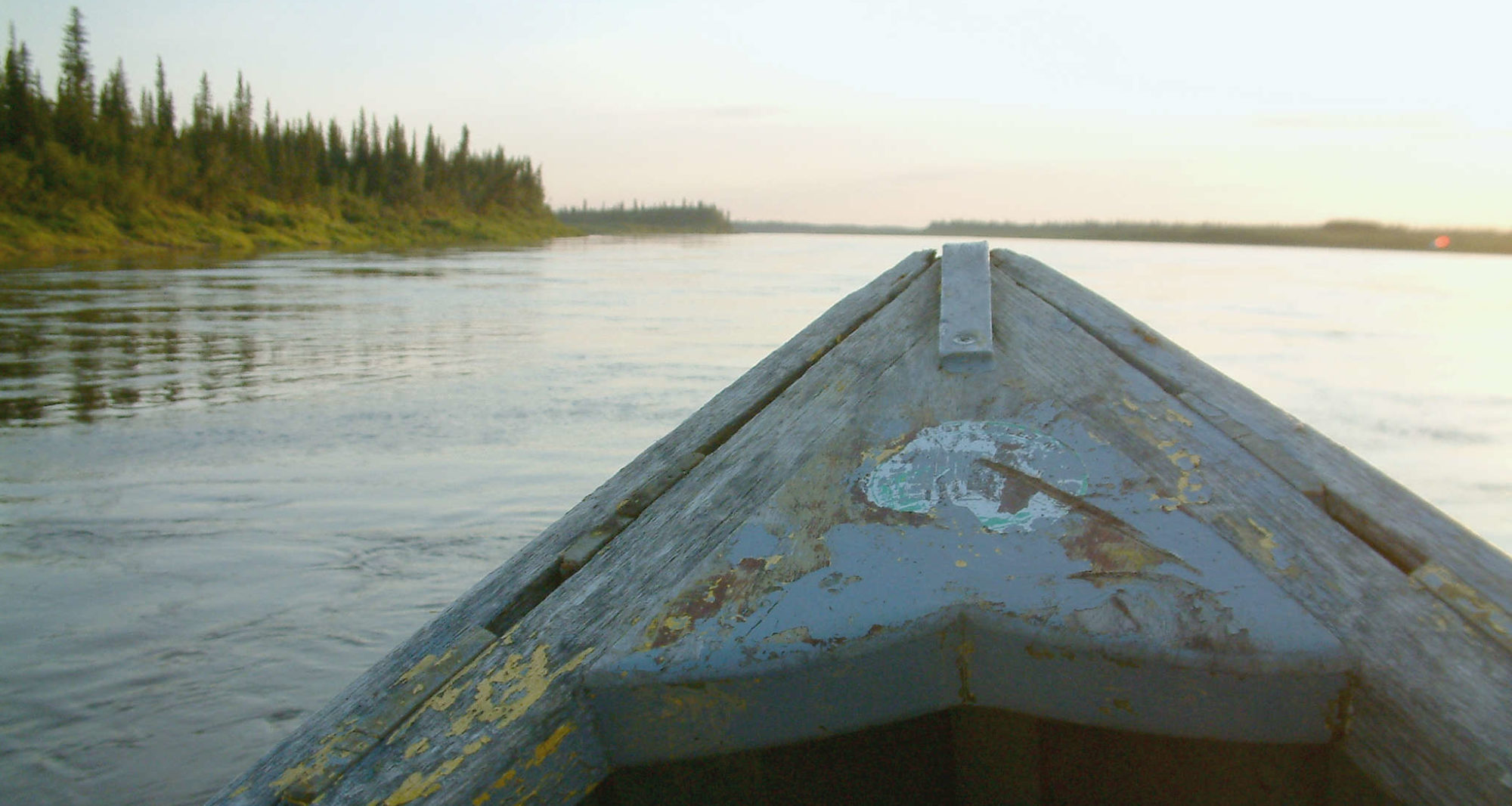The Winter Road
I’ve just come in from shoving heavy wet snow and I am thinking of a special time back home. As I sit back in my chair and close my eyes I drift back to another time.
It is a freezing minus thirty outside but thankfully a lot warmer here inside the cab of my dad’s Ford tractor. The cab’s heater which is on its highest setting just barely keeps me warm while the cold air continually seeps through cracks in this metal and glass box. I have been at the wheel now for about three hours and riding along at a risky 30 kilometers an hour over the rough and tumbling set of tracks that lie before me. These tracks unfold before me under my flood lights and it is a challenge to keep focused on my journey as I am tossed about by the twists and turns along my snowy way. My eyes are growing heavy and it is becoming difficult to hold on to the steering wheel.
I’ve been riding this night through the muskeg flats for hours and now the way takes a familiar turn through a heavily wooded area and it banks to the right as I approach the Kapiskau River. Moosonee is hours behind me and Attawapiskat, the next settlement and my home on the shores of the great James Bay is hours before me. This is a good spot to stop high on the bank of the river. It is time to refuel and take a break from the monotony of driving the tractor with caboose and loaded trailer in tow.
As I climb out of the cab and into the darkness I hear the slam of the caboose door and my cousin Benji leaps out into the night. This is familiar work and we go about the job of refueling the tractor almost mechanically. We move about at our task slowly like big bears in our heavy, multi layered winter clothes. After refueling I join Benji at the back of the caboose and we sip hot tea under a diamond star studded sky that seems so close it is easy to imagine I am hurtling through space on mother earth.
Benji is my companion on this trip. With every one of these journeys it is a must to have company as the risks are great in such a remote and frozen place. Benji is accustomed to the ride in the caboose which features a stove, bunk beds and food. At this point it is time for him to take over the driver’s seat and I am happy to sit back in the caboose for the hours to come.
This is one of my fond memories of my many trips on the winter road between Attawapiskat and Moosonee. For a short time, usually January, February and March my remote home, Attawapiskat becomes linked to the rest of the world through the winter road. Attawapiskat is the most northern part of this seasonal road, which winds through the muskegs and wilderness to the south, first to Kashechewan First Nation, then Fort Albany First Nation and finally after a long stretch, to Moosonee.
This is the only time of the year people can actually get into their trucks or tractors and head out of town to another community. The road starts with the packing of snow by area snowmobilers and once it is hard packed and the river ice is thick enough to cross, the big diesel tractors come out to maintain the frozen route until spring thaw.
This is an opportune time of the year to transport building supplies and large products into the northern communities. Caravans of tractor trailers fixed with skis are pulled by D-9 tractors through the frozen north land. This is also a chance for people to visit the other communities along James Bay to stock up on produce, shop, visit with friends, and to attend bingos or hockey tournaments.
The winter road is very special to we Cree in Attawapiskat. For many it is the only road they will ever drive on in their lives. For some reason, I think I will see the development of a permanent road in the not too distant future and the winter road will become a thing of the past.
